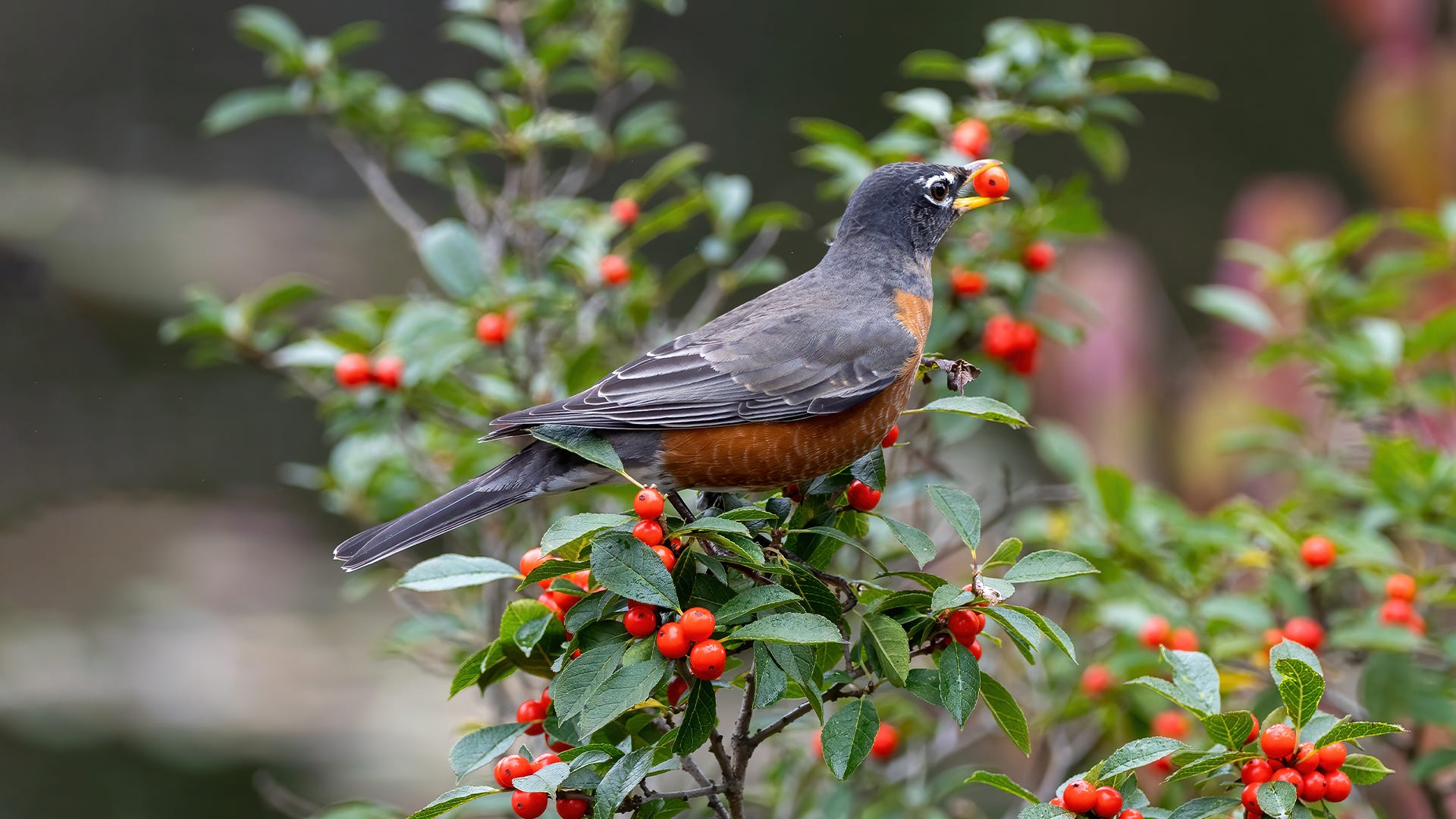
April showers bring May flowers, but summer can also be a tumultuous season when it comes to rain. For birdwatchers, it can be especially frustrating to deal with the unique weather changes common in summer—it can be a rainy season with its sudden onslaughts of thunderstorms. Keeping seeds edible for birds during the season means keeping feeders protected from those unexpected rainstorms that strike on hot summer days.
Protect Your Bird Feeders to Prevent Molding Seeds
Heat and humidity can put your seeds at risk for mold, which can hurt your backyard visitors. Since you will need to throw out moldy, moist seed, you might find yourself going through more seed during summer. The stormy, rainy days of summer also put your feeders at risk for mold buildup. With these easy tips, you can keep your backyard birds healthy—and cut back on wasted seeds in your feeders.
See also: How to Clean Your Bird Feeders
1. Move Feeders Before the Rainstorm Hits
The easiest way to protect your seeders and feed is to move them to shelter when it rains, if possible. Feeders that are on poles or stands should be placed under an awning, covered porch, or patio. Keep in mind that birds may have trouble finding your feeders if they're all the way under a shelter. Just be sure that the bulk of the feeder is in a spot where it will remain dry despite the rain.
2. Install a Rain Guard
Visit your local hardware store, home improvement store, or online retailer and look for a rain guard. A rain guard is placed above the bird feeder. Usually clear in color, these plastic domes are essentially an umbrella for your backyard visitors. Not only will you be protecting the seeds, but a rain guard will protect the birds from the rain while they are feeding.

3. Attach a Baffle
If you can't find a rain guard, you can also use a baffle to keep your bird feeders dry during rainstorms. Though they are intended to keep squirrels out of your feeders, if you place them lower than you would for squirrel prevention, they can function similarly to a rain guard. When shopping, mention to the salesperson how you intend to use a baffle. Many times, these salespeople are birdwatchers themselves and might have helpful tips for you when it comes to getting the best results using a baffle.
See also: How to Successfully Squirrel-Proof Your Bird Feeders4. Replace Your Feeder(s)
If you've had your feeders for several years, you might consider replacing your existing feeder(s) with an all-weather feeder. All-weather feeders are designed to withstand the fluctuating elements of nature. An all-weather feeder may not be identified as such on the packaging. Look for one with a cover that will protect your seed from rain, and prevent buildup of snow and ice in the winter.

5. Modify Your Feeders with Drainage
Many feeders are prone to collecting water in their bases because they don't have adequate drainage. As a last resort, you can enhance drainage yourself. A simple way is to widen whatever drainage holes already exist in your feeder's base using a drill. Even better, you can drill extra holes to expand the drainage system of your bird feeders. Consider adding a light layer of gravel to the bottom of the feeder to elevate the seeds, keeping them away from the rainwater. If you prefer, you can also do this just as effectively with a small patch of mesh.
See also: 7 Tips for Safely Feeding Birds in SummerAre You Storing Seed Properly?

As you decide which of these options work best for you, also keep seed storage in mind. Just as you might change locations of other garden care products you store during the hot summer months, consider where you store your seeds.
With the increase in temperature during summer, humidity increases in the air and can affect your seeds if they're not properly stored. Instead of leaving seeds in the bag they came in, store them in an airtight, covered container. Keep the containers in a cool, dry location, out of the sun and rain. This will ensure the moisture in the air will not get to your seeds, preventing them from getting moldy before you even fill your feeders.
The rainstorms of summer don't have to rain on your birdwatching fun. With these simple tips, you can enjoy your backyard visitors come rain or shine.







